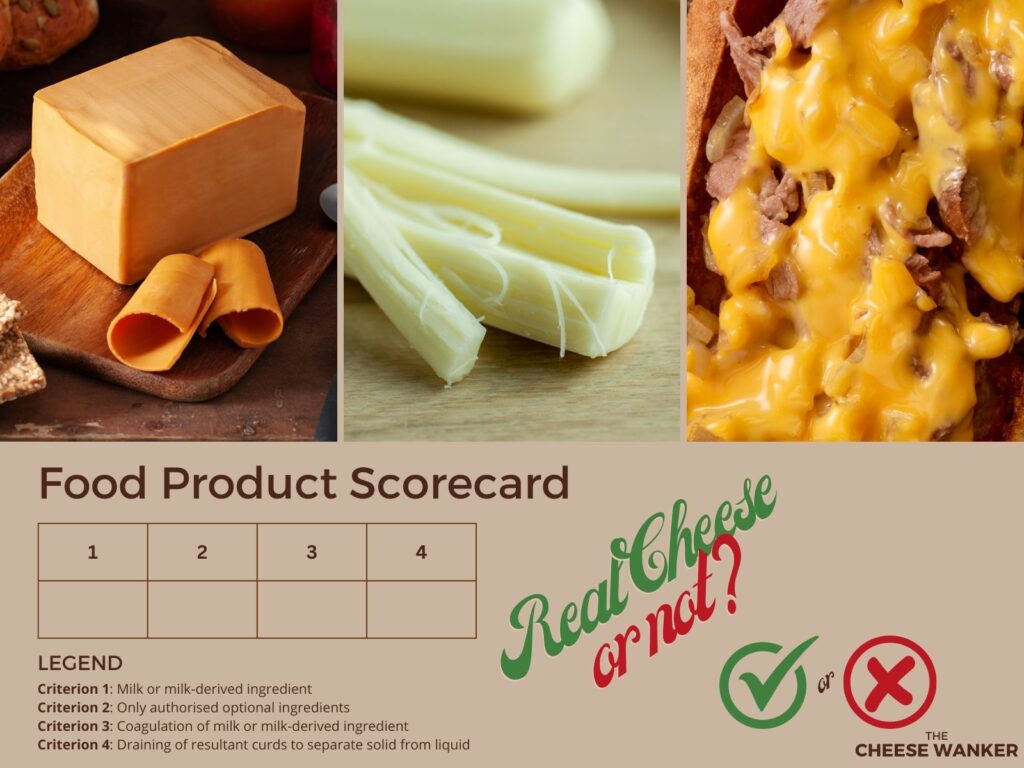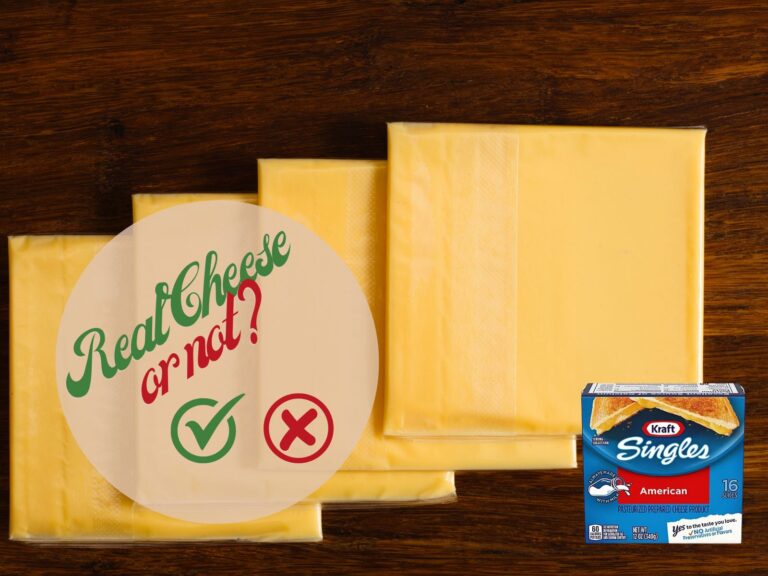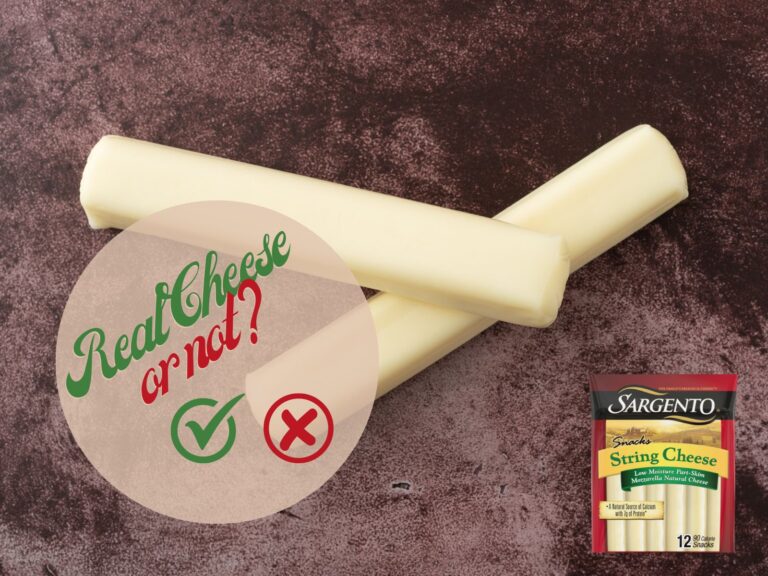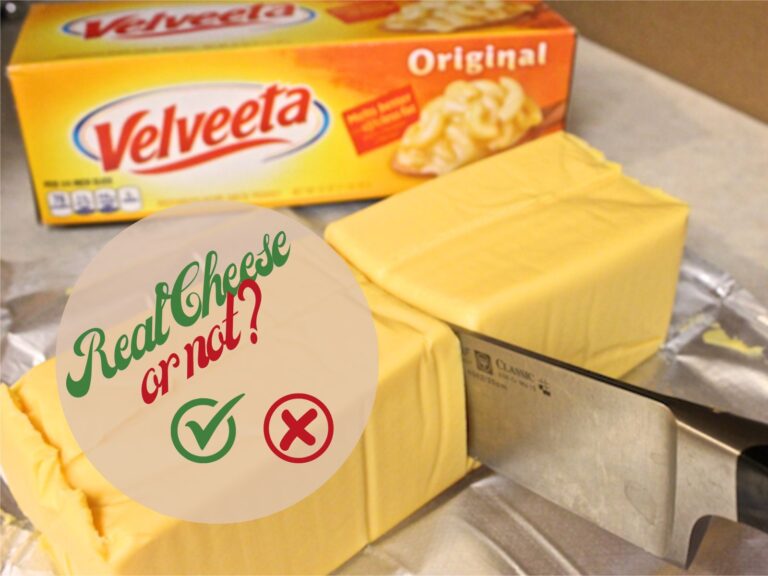Cheese is a beloved food that has been enjoyed for centuries around the world. From Brie to Cheddar through Stilton, there are countless varieties of cheese to suit every taste and occasion. But what exactly is cheese, and how is it made? In this blog post, we’ll explore the definition of cheese and tell you about a test that we have devised.

SEE ALSO: Our Cheese Definition Test Scorecards archive →
Official Cheese Definition Test
Now this is a hotly debated topic even amongst cheese professionals. And you will be hard-pressed to find an accurate definition of what makes a product cheese. The main reason for this is how complex and varied cheeses can be.
However, we wanted to give this a go. After prolonged deliberations, we’ve come up with these essential characteristics:
Criterion 1: Milk or milk-derived ingredient
For a product to be called cheese, the main ingredient has to be milk (raw or pasteurised) or a milk-derived product. The latter may include skim milk, whey (sweet and sour) and cream.
You will notice here that we don’t include any plant-derived “milks” such as soy milk or almond milk. The reason for this is that they don’t meet the definition of dairy. As such, any plant-based product will fail Criterion 1 of our Cheese Definition Test.
Criterion 2: Allowed (but optional) ingredients
In addition to milk and milk-derived ingredients, we have collated a list of allowed (but optional) ingredients.
- Salt
- Cheese culture
- Enzymes (for flavour e.g., lipase)
- Calcium chloride (coagulation aid)
- Sorbic acid and/or lactic acid (preservative)
- Hydrogen peroxide (preservative, must be accompanied by catalase enzyme)
- Colouring agent (e.g., annatto)
- Flavouring agent
If the food product contains any non-milk (or non-milk-derived) ingredient that is NOT on this list, it will fail Criterion 2 of our Cheese Definition Test.
Criterion 3: Coagulation of milk (or milk-derived product)
The production process must include a step that involves coagulation of the milk or milk-derived ingredient. For the purpose of our definition, you can use either of the following to bring about coagulation:
- Rennet: This includes coagulating enzymes of animal, plant or microbial origin. Most traditional cheeses around the world use rennet for coagulation. You can read more about the different types of rennet here.
- Acid: You can also bring about the coagulation of milk without using rennet. Some acids used in cheesemaking include vinegar and lemon juice. And examples of rennet-free cheeses include Ricotta and Paneer.
Criterion 4: Separation of curds and whey
Finally, after coagulation, there has to be a step where you separate the formed solid mass (curd) from the leftover liquid (whey). This process can take place in a number of different ways:
- Ladling: This is a traditional method of separating curds and whey. After coagulation, the cheesemaker scoops the curd out with a ladle and places into a cheesecloth-lined mould. Then, they pour off the remaining liquid (whey). One spectacular example of a cheese made this way is Camembert de Normandie.
- Cutting and draining: After coagulation, you cut the curd into small pieces with a knife or curd cutter. The, you warm and stir the mixture, causing the curds to shrink and expel whey. Actually, this process is used to make traditional cheeses like Cheddar and Parmigiano Reggiano.
- Using a cheese press: This method is often used for harder cheeses. After the curds have formed and been cut, they are placed into a mould and pressed using a cheese press. The pressure helps to remove more whey and create a firmer cheese. Gouda and Gruyère are two hugely popular cheese that are pressed during production.
- Centrifugation: Lastly, centrifugation is a common industrial cheese production method. The maker places the curds and whey in a centrifuge, which spins rapidly to separate them. Once this is done, they collect the curds and process them further to make cheese.
Summary
To summarise, a food product must meet every single criterion to pass our Cheese Definition Test. If you have a look through our scorecards below, you will find that a number of commercial food products (e.g., Cheez Whiz and Velveeta) do not pass our Cheese Definition Test.
We want to point out here that this is merely a technical test. And our results should not impact whether you eat and enjoy those food products or not.
How do you feel about our test? Leave us a comment below.



